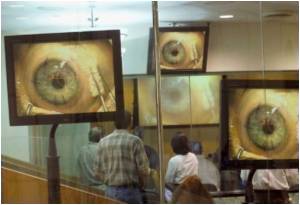Australian researchers say they have discovered two new genes linked to open angle glaucoma, a severe type of the eye disease.

Dr Stuart MacGregor from QIMR’s Queensland Statistical Genetics Laboratory said this discovery will help to identify patients at the highest risk of severe glaucoma.
“It opens the pathway to developing completely new ways of treating glaucoma patients that could delay disease progression and prevent blindness,” he said.
"Open angle glaucoma, sometimes called chronic glaucoma, is the most common type of glaucoma, and tends to progress at a slow rate.
"Sufferers may not notice that they have lost vision until the disease has progressed significantly.
“We found that 18% of the population carry risk variants at these two genes, making them up to three times more likely to develop severe glaucoma than those that don’t.
Advertisement
It is the collective name for eye diseases causing irreversible loss of peripheral vision, often associated with too much pressure developing inside the eyeball.
Advertisement
"Many cases still remain undiagnosed until irreversible loss of vision has occurred.”
Researchers from QIMR collaborated with groups from five other Australian universities on the ground-breaking study of 4,500 patients from Australia and New Zealand. Dr MacGregor emphasized the important role of twins in the research.
“The genetic information provided by the twins was used in the study as a comparison to those affected by glaucoma,” he said.
Source-Medindia












